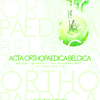External fixation for high energy paediatric diaphyseal tibial fractures : Taylor Spatial Frame versus Uniplanar Fixator
Tibial diaphyseal fracture ; external fixation ; TSF
Published online: Feb 09 2021
Abstract
The purpose is to compare the outcomes of the Taylor Spatial Frame (TSF) versus the Unipolar External Fixator (UEF) (Hoffman) in children’s tibial diaphyseal fractures.
Forty-two children with high-energy diaphyseal tibial fractures underwent surgical treatment from January 2006 to December 2013 were divided in 2 groups based on type of fixation. Paley’s criteria were used to evaluate obstacles and complications from surgery until one year after frame removal. Statistical analysis was performed using Cohen’s d test and Student T-test.
Mean follow-up for both groups was 2,4 years. No intraoperative complications, neuromuscular injury, re-fracture, leg length discrepancy, malrotation and post-operative complications according to Paley’s criteria were recorded.
No statistical differences were observed regarding correction after treatment and time to union between open and close fractures in each group. However, statistically significant differences were observed regarding the incidence of problems, obstacles and time to union when TSF was applied.
